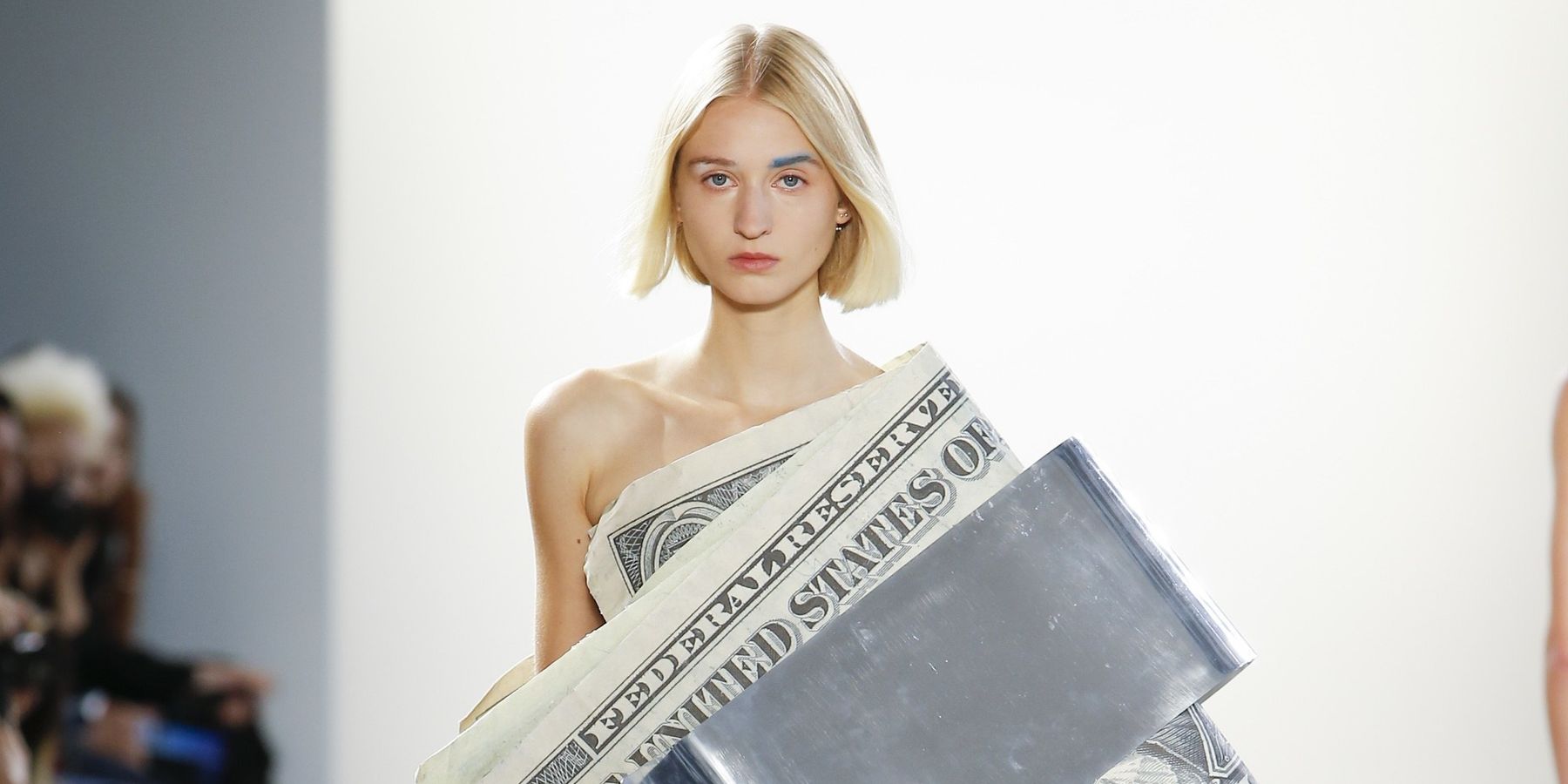
Fashion Month
Throw All Your Dollar Bills at This Rising Designer
12 September 2018

Japanese designer Kota Okuda was one of the 15 graduates of Parsons New School of Design's MFA program to present his thesis collection on their annual runway show, which coincides during New York Fashion Week.
Okuda, who went to London's renowned fashion school, Central Saint Martins, for jewelry design, arrived at Parsons in 2016, but had never used a sewing machine. For his first-ever collection of clothes, Okuda explored the connection between American materialism and commodification of the body, using exaggerated dollar bills made of varying fabrics, metal, acrylic, and plastic-like materials to do so. "I'm a very crafty person," he tells PAPER. The deliberately impractical clothes, as if to prove their own ironic point, has already garnered interest from celebrities like Nicki Minaj.
Related | Break the Internet: Nicki Minaj
PAPER caught up with Okuda to talk about the collection's construction, Marxist theory, and what's next for this rising design star.
You made a collection that was like the exaggerated form of capitalism. Can you tell me about why you decided to focus on what you did for this collection?
My background is in jewelry design. Of course, I'm always dealing with gold, bronze, and diamonds, and people are always interested in how those materials look on the body. At the very beginning phase of designing these clothes, I was reading Karl Marx's The Commodity. In Marxist theory, a commodity is a bought or sold item that has value, and that value is focused on human labor. That got me thinking about how people control the body, and the body controls people, and how that relationship gets twisted sometimes. I thought it was very interesting, this was a very fun beginning point for me in designing.
Okay, so you started there, basically focusing on how we kind of place high value on certain things. When you were making the clothes, what did you use to make the dollar bills?
The dollar bills were a mix of paper and fabric and I just glued it together using double-stick tape — very crafty.
To me, the collection is more couture rather than ready-to-wear. Was that always your intention?
Of course, I'm not a fashion designer, but always curious and interested in using a body and its relationship to clothes whether they are practical or not. My mission was to essentially "bronze" the body with clothes, as if I was working with jewelry, and figuring out how to communicate this complex thing. So, still exploring the relationship between jewelry and body.
Since this is your first time making clothes, how did you come up with sketches knowing you'd make things that were more experimental?
I started by using a CAD program, and it was a big turning point for me. It showed me that my designs could be much more conceptual than I had imagined.
Can you say more about the materials you used to make these clothes?
Yes. Not a liner for plastic but a very similar material, my collection combined plastic, paper, fabric, metal, lots of material.
For the money clip look, it was a very simple process: I got the aluminum and the band and fastened together.
Was it hard to dress the models in these looks?
No, believe it or not, there were always belts inside that made the clothes easier to adjust.
Do you feel like this gave you confidence to design more clothes in the future or was it just a detour from what you normally do with jewelry?
I want to continue both. Mainly, I'm doing jewelry design for Telfar and Sea New York and doing a lot of freelance jewelry design now. But if I have a chance, I want to continue on in costume design and design conceptual dresses and stuff like that in the future.
Related | Sonja Morgan Models Telfar
How do you feel that this was received when people saw it?
I got a bunch of cool messages and reactions. I also got a message from Nicki Minaj saying "I need it" and I said "when" and she said "now."
Well maybe you'll be designing for Nicki in the future.
I hope so!
Photography: Monica Feudi